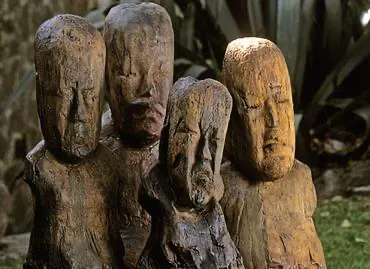Rediscovering El Manatí: A Window into Olmec Civilization
In 1987, a seemingly mundane effort to boost local income through fish farming by the residents of El Macayal, a village in the Mexican state of Veracruz, led to an extraordinary archaeological discovery. Situated on the floodplains of the Coatzacoalcos River system, the village is in proximity to Cerro Manatí, a hill that would soon reveal its historical significance. As villagers dug artificial ponds near a local freshwater spring, they unearthed a trove of artifacts, including pottery shards, stone axes, rubber balls, bones, and peculiar wooden objects initially mistaken for tree roots. Recognizing the potential importance of their finds, the villagers contacted Mexico’s National Institute of Anthropology and History (INAH), setting the stage for a series of investigations that would uncover the rich history of El Manatí and its significance to the Olmec civilization.
Get your dose of History via Email
The Sacred Landscape of El Manatí
Subsequent research at El Manatí has illuminated its role as a sacred site, attracting pilgrims and elites for centuries. The natural sweetwater spring and the prominent hill were central to its spiritual significance, mirroring the reverence for hills, mountains, and water sources in ancient Mexican cultures. The presence of hematite, used for its red pigment symbolizing blood, further underscores the site’s ceremonial importance. The Olmecs, one of the earliest Mesoamerican civilizations, are believed to have occupied El Manatí, as evidenced by the artifacts and the site’s geographical and temporal context.
Chronological Phases of El Manatí
Archaeologists have delineated three distinct phases in the site’s history: the Manatí A Phase (1700-1600 BC), the Manatí B Phase (1700-1050 BC), and the Macayal Phase (1050-900 BC). Despite the absence of permanent structures or monumental art, the array of artifacts discovered at El Manatí is remarkable. These items were not merely discarded but were carefully arranged, suggesting ritualistic intent. Among the earliest finds were stone axes made from exotic materials, indicating elaborate trade networks and significant effort in their production.
Rituals and Offerings
The site has yielded evidence of complex ritual practices, including the burial of infant bones and remains of unborn babies, which some researchers interpret as offerings or sacrifices to the gods. The discovery of rubber balls dating back to around 1700 BC, possibly used in the Mesoamerican ball game or for ritual purposes, highlights the ceremonial significance of the site. The presence of rubber, associated with blood and water deities, further connects the artifacts to the sacred nature of El Manatí.
The Carved Wooden Heads of El Manatí
Among the most astonishing discoveries are the carved wooden heads, dating back to around 1200 BC. These are the earliest examples of wooden artifacts found in Mexico, preserved in the unique conditions of the El Manatí swamps. The carvings, each with a distinct facial expression, may represent ancestors, rulers, or water spirits. The fact that two of these carvings were repatriated to Mexico in 2018 after being identified in a German museum highlights the international significance of the El Manatí findings.
The Legacy of El Manatí
The ongoing research at El Manatí continues to shed light on the Olmec civilization and its cultural practices. While the site remains closed to tourists, safeguarding its integrity, the discoveries made by the villagers of El Macayal have contributed invaluable knowledge to the understanding of ancient Mexico. The artifacts and their contexts offer a glimpse into the spiritual and daily lives of the Olmecs, providing a foundation for further exploration of this enigmatic civilization. The story of El Manatí is a testament to the enduring legacy of the Olmecs and the rich archaeological heritage of Mexico.

